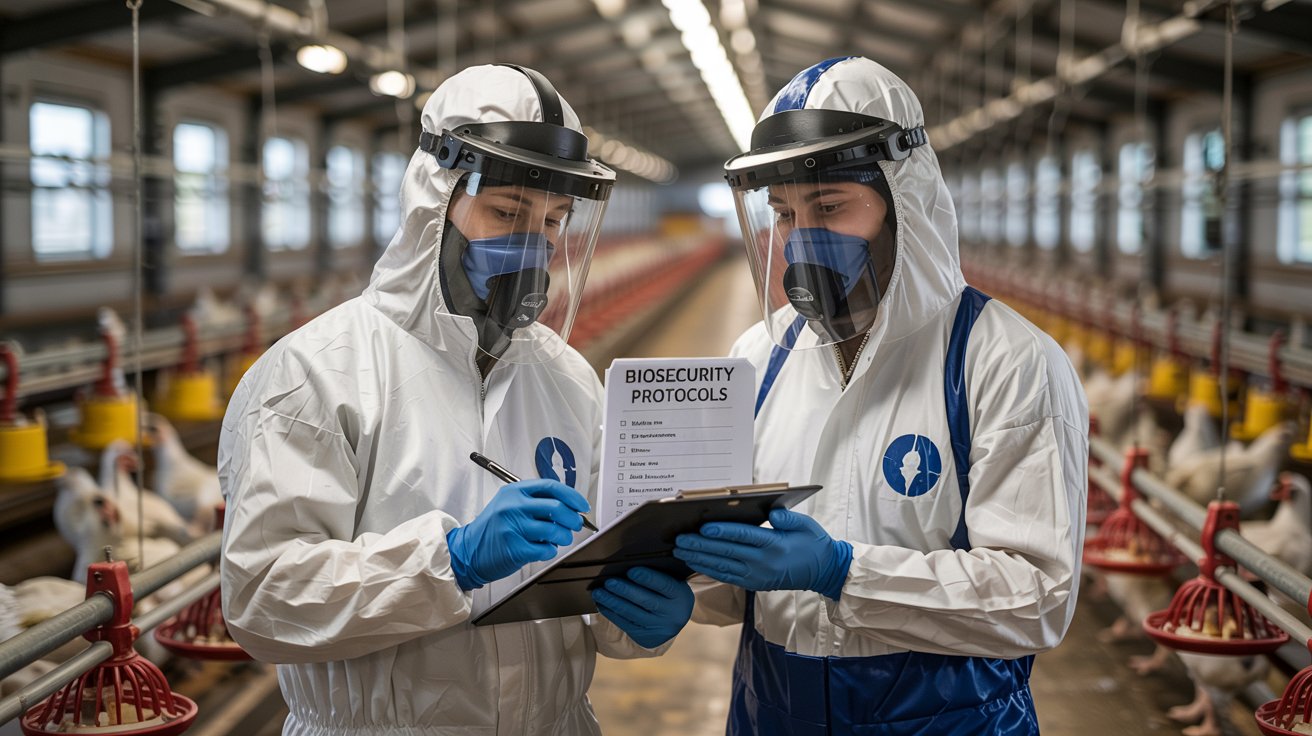U.S. Faces Alarming Rise in Bird Flu Cases: Key Warning Signs Emerge
The United States is witnessing a significant surge in avian influenza (bird flu), raising serious concerns among public health officials, farmers, and consumers. The virus, primarily affecting birds, has begun to spread to mammals, increasing the risk of human infections. This article explores the outbreak’s current status, economic consequences, human health risks, and the best preventive measures to contain the virus.
Current State of the Bird Flu Outbreak in the U.S.
The bird flu outbreak in 2025 is more widespread than previous years, affecting poultry farms, wildlife, and even livestock. The highly pathogenic H5N1 strain has spread across all 50 states, causing mass culling of birds and severe disruptions in the poultry industry.
Key Data on the 2025 Bird Flu Outbreak
| Category | Details |
|---|---|
| States Affected | 50 states & Puerto Rico |
| Birds Infected | Over 138 million |
| Human Cases | 70 confirmed infections |
| Human Deaths | 1 reported case |
| Industries Affected | Poultry, dairy, egg production |
Health authorities, including the Centers for Disease Control and Prevention (CDC) and United States Department of Agriculture (USDA), are closely monitoring the situation to prevent further spread.
Economic Impact: How Bird Flu is Affecting the U.S. Market
The outbreak is significantly impacting the poultry and dairy industries, causing financial strain on farmers and increasing prices for consumers. The mass culling of infected birds has created an egg shortage, leading to soaring prices.
- Egg prices have increased from $2.50 per dozen in 2024 to $5.90 in 2025—a 136% price jump.
- The USDA has announced a $1 billion emergency response plan, which includes:
- $500 million for biosecurity improvements.
- $400 million in financial relief for farmers.
- $100 million for vaccine research to prevent future outbreaks.
Human Health Risks: Can Bird Flu Spread to Humans?
While bird flu primarily affects birds, human cases have been reported, especially among individuals with direct exposure to infected animals. In 2025, 70 human cases of H5N1 were confirmed, primarily among farm workers and people in close contact with livestock.
Symptoms of Bird Flu in Humans
- High fever (above 100.4°F or 38°C)
- Cough and respiratory issues
- Muscle aches and fatigue
- Nausea, vomiting, or diarrhea (in some cases)
- Severe cases can lead to pneumonia, organ failure, or death
The CDC advises poultry workers, farmers, and veterinarians to wear protective gear, including gloves, masks, and goggles, to reduce the risk of infection.
Preventive Measures: How to Protect Against Bird Flu
To prevent further spread, farmers, businesses, and consumers should implement strict biosecurity and hygiene measures. Here are the best practices:
For Poultry Farmers and Businesses:
- Limit Exposure to Wildlife: Wild birds often carry the virus; keeping poultry enclosed reduces exposure.
- Disinfect Equipment and Clothing: Always clean tools, vehicles, and protective gear before and after farm visits.
- Control Farm Access: Restrict non-essential visitors to minimize contamination risks.
- Early Detection: Monitor birds for symptoms such as swollen eyes, reduced egg production, or sudden deaths.
For Consumers:
- Cook Poultry Thoroughly: Ensure all poultry products reach an internal temperature of 165°F (75°C).
- Proper Food Handling: Avoid cross-contamination by using separate utensils for raw meat.
- Stay Informed: Follow updates from CDC and USDA to track outbreaks in your area.
Understanding the Bird Flu Impact
+----------------+
| Bird Flu Outbreak |
+----------------+
|
------------------------------------------------
| | | |
+-----------+ +-------------+ +-----------+ +---------------+
| Economic | | Human Health | | Prevention | | Future Risks |
| Impact | | Concerns | | Measures | | & Vaccines |
+-----------+ +-------------+ +-----------+ +---------------+
| | | |
Egg Prices ↑ Human Cases ↑ Biosecurity ↑ Research $ ↑
Poultry Losses Symptoms Cooking Safety Vaccination Plans
USDA Funds PPE Gear Public Awareness Funding AllocationsConclusion: What Lies Ahead?
The 2025 bird flu outbreak in the U.S. highlights the importance of early detection, biosecurity measures, and public awareness to contain the virus. As researchers work toward developing an effective vaccine, businesses and consumers must remain vigilant in following safety protocols.
With strong government response, proper farm management, and informed consumer behavior, the risk can be minimized, ensuring a more stable poultry industry and safer public health environment.
[USnewsSpherre.com / CDC]





